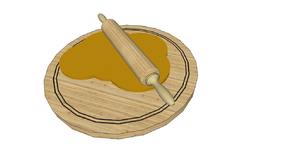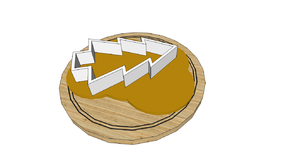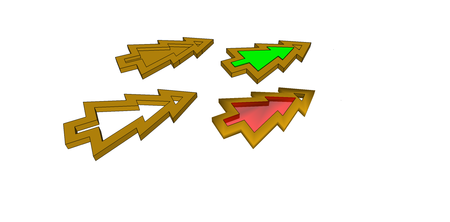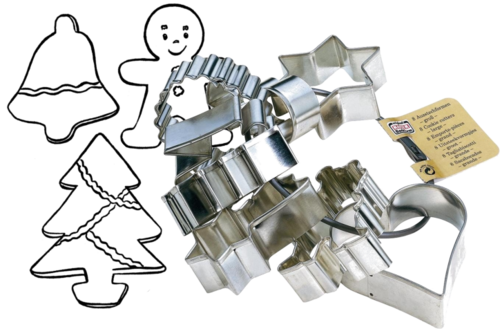Edible Christmas Tree Ornament
From DT Online
What to Make:
(Designers might call this the Design Brief and/or the Specification)
Design and make a range of Christmas tree ornaments based on an edible Gingerbread dough mixture
What to Use:
- Gingerbread Dough
- Boiled Sweets to add colour
- Pastry Cutters
- Baking Tray lined with Baking Parchment (or Greaseproof Paper)
Things to think about:
It is believed that Christmas tree tradition was started by a monk in Germany in the 7th or 8th centuries. The trend to bring them indoors and decorate them began in 1605 in Strasbourg when trees were adorned with paper roses, candles, painted eggshells, nuts, biscuits and sweets. The practice became more and more popular in German homes and, from the start of the 18th century, foods like gingerbread or other hard biscuits were baked in various shapes such as fruit, bells, hearts, stars and angels.
Some ideas:
Search for Christmas related shapes using the internet and collect suitable pastry cutters - two cutters of the same shape but different sizes can be used one inside the other to create outline shapes. Rods, tubes, bars and other 'found objects' can be used to make depressions into the cut-out shapes (e.g. to represent baubles on a tree).


Ways of Making:
- Choose a suitable Gingerbread Dough recipe (e.g. most recipes are based on Creaming together 100g soft butter and 50g brown sugar to which is added 250g sieved plain flour, half a teaspoon of bicarbonate of soda, two teaspoons of ginger and sometimes a pinch of salt. The mixture is beaten into a smooth paste, adding five tablespoons of Golden Syrup as required - and optionally an egg yolk).
- Leave the dough in the fridge to cool then roll out to 6mm to 8mm thickness on a lightly floured surface.
- Cut out shapes with pastry cutters and place on a baking tray lined with baking parchment. Smaller shapes can be cut right through using a smaller pastry cutter (or knife) and the piercings filled with crushed boiled sweets. Alternatively designs can be pressed into the surface to create depressions which can also be filled with crushed boiled sweets.

- Use a skewer to make a small hole in the top of each biscuit so it can be suspended from the tree (this might be done part way through the baking process).
- Bake in an oven pre-heated to 180C/350F/Gas 4 for 12-15 minutes or until golden brown and the boiled sweets have all melted. Leave on the tray for 10 minutes and then move to a wire rack to finish cooling.
Note: Creating depressions in the cut-out shapes and filling with crushed boiled sweets is a good model of Champlevé enamelling as used in Art Metalwork. Cutting right through the shapes to create piercings which are filled, replicates Plique-à-jour enamelling and produces a much more 'sparkly' effect as "the daylight shines through".
Testing Final Design:
- Are there limitations on the complexity of shapes which can be used?
- Does the effect of light playing on filled piercings really look different to the way the filled depressions reflect light?
- Does the shape used affect the way it hangs on the tree?
- Did the biscuit bake without sticking to the parchment?
- Were they enjoyable to eat!
Further work:
- Find out how the word 'biscuit' originated
- Investigate a range of recipes for a variety of dough.
- Create Stained Glass Window Christmas Tree Ornaments based on the intricate stone tracery seen in the stained glass windows of medieval buildings.
 |
 |
 |
 |
 |
 |
 |
 |
 |
| Baking Parchment |
Muscovado - Dark Sugar |
Plain Flour |
Bicarbonate of Soda |
Ginger Powder |
Golden Syrup |
Vanilla Extract |
Baking Powder |
Dry Bakers Yeast |
